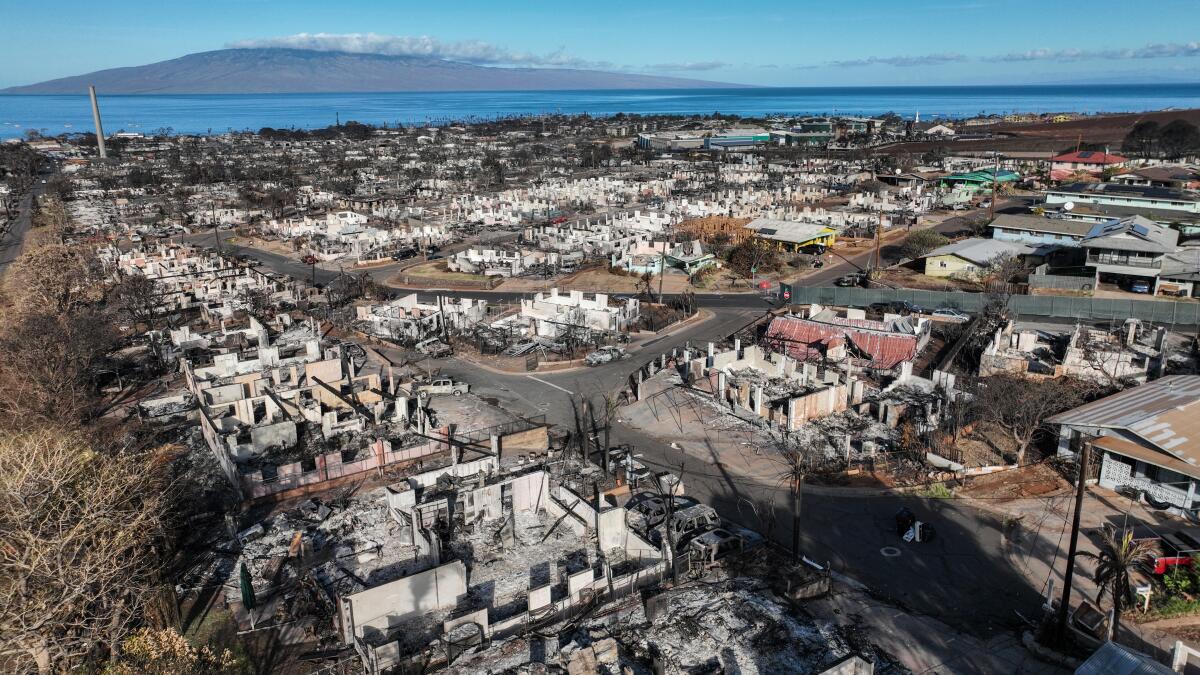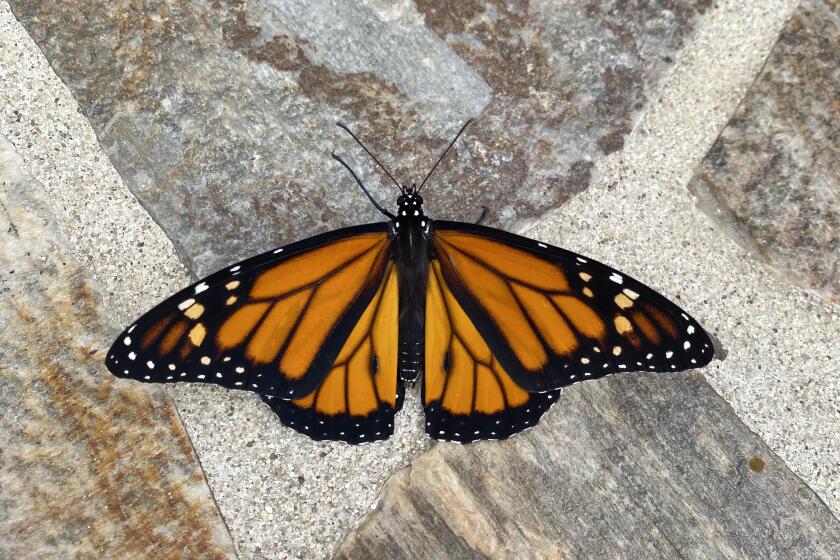Apodaca: Orange County’s ties to Lahaina extend beyond empathy

As Lahaina burned, Orange County residents empathized with the suffering of the people of Maui.
Affection for the Hawaiian islands runs deep here. Many of us vacation in the Aloha state regularly and some even have homes there. Fair or not, our love for Hawaii has an almost proprietary feel, as if our special bond with the islands surpasses all others.
And so we share in Maui’s pain. We understand too well how quickly and easily fires can rage out of control, turning what seems like paradise one minute into the pit of hell the next. We’ve witnessed flames raging perilously close to population centers, choked on air heavy with smoke, seen ash blanket everything in sight as bright days turn dark with soot-filled skies.
As of this writing, the fire on Maui was already the deadliest in modern U.S. history, with 115 confirmed fatalities and at least 1,000 people still missing. Those gruesome numbers put it past the previous record-holder, 2018’s Camp Fire that leveled the California town of Paradise.
The similarities are eerily familiar. The Camp Fire was caused by downed power lines. It is now believed that high winds — the kind Californians are well acquainted with and are growing more fierce due to climate change — brought down power lines that ignited the flames on Maui.
But even more binds us to Hawaii, and those commonalities should feature prominently in any discussion about wildfires — or any natural disaster, for that matter.
Both Hawaii and California have histories of colonialism and land development, which essentially assured that in modern times fires would grow larger, more intense and more difficult to control. Decisions made decades or even centuries ago created landscapes that are far more prone to exactly the kinds of big, deadly wildfires that destroyed most of Lahaina and have ravaged communities throughout our own beautiful state.
In Hawaii, for centuries prior to colonization, the islands’ residents employed a sophisticated agricultural system that was used to grow crops such as taro. But colonists who came to the islands had, by the 19th century, largely replaced these practices of subsistence farming that maintained the naturally abundant and diverse environment with high-maintenance cattle ranches and sugar and pineapple plantations.
They also introduced nonnative grasses. When the ranches and plantations were abandoned as Hawaii’s economy pivoted to tourism, those invasive grasses spread unchecked. They are now ready kindling spread across the land. All that’s needed for a fire to ignite and commence its rapid onslaught is a spark — and those sparks are increasingly likely to occur, given the growth in development right up alongside those tinder-dry grasslands.
Patrice Apodaca and her husband’s small effort in their garden to help the iconic butterfly survive has already paid off.
Although California, unlike Hawaii, is naturally more fire-prone, there are many relevant historical parallels of colonization and modification of the native landscape, followed by a period of rapid development.
For thousands of years the native tribes here were careful stewards of the land, using what’s referred to as “cultural burning” — small, controlled burns that reduced fuel loads by clearing out dead leaves and other debris. Their burning techniques revitalized ecosystems, encouraged biodiversity and created fire breaks in the landscape.
Spanish colonists and missionaries, and later American settlers, brought in cattle and nonnative plants and introduced fire suppression policies that did away with these healthy cultural burning practices. The highly combustible nonnative grasses pushed out the native grasses that were well adapted to the climate. Now those invasive grasses are fuel for massive wildfires.
Increasingly, those wildfires are engulfing the housing developments that have been built next to grasslands and other fire-prone areas. The world we humans created over centuries almost guarantees that, absent intervention, fires will grow ever more monstrous.
Which means that Maui’s catastrophic burning will not be the last — or the worst. As fall approaches, we Californians will brace ourselves every time those dry winds we know so well start to blow.
Is the situation hopeless?
Only if we do nothing.
“It’s horrible to know that things could have been done differently in the past,” said Steven Allison, professor of ecology and biology, and earth system science, at UC Irvine.
“But the past is the past. What can we do from here? That has to be the focus.”
Habitat conservation should be a top priority, Allison said. We need to be far more cautious about where and how we build and work aggressively on efforts to preserve — and renew — native habitats.
“Number two is coming together as a community or set of communities to manage the land that we have,” he said. “If we don’t work on that and put that effort in it’s really vulnerable to the effects of climate change and massive fires.”
And we need to keep building awareness.
We must foster a broader acknowledgment and understanding of the ways we have abused our wonderful world. And we must realize that if we don’t want communities throughout the state to be consumed by fire year after year, it’s up to us to take action to find practical solutions, to restore the natural landscape and to save ourselves from our own worst instincts.
All the latest on Orange County from Orange County.
Get our free TimesOC newsletter.
You may occasionally receive promotional content from the Daily Pilot.





